Contents
Stiff-haired trametes (Trametes hirsuta) is a tree fungus of the Polypore family, belongs to the genus Tinder fungus. Its other names:
- Boletus is rough;
- Polyporus rough;
- The sponge is hard-haired;
- Tinder fungus is hard-haired.
Although the mushroom is an annual, in mild winters it is able to survive until the next season.
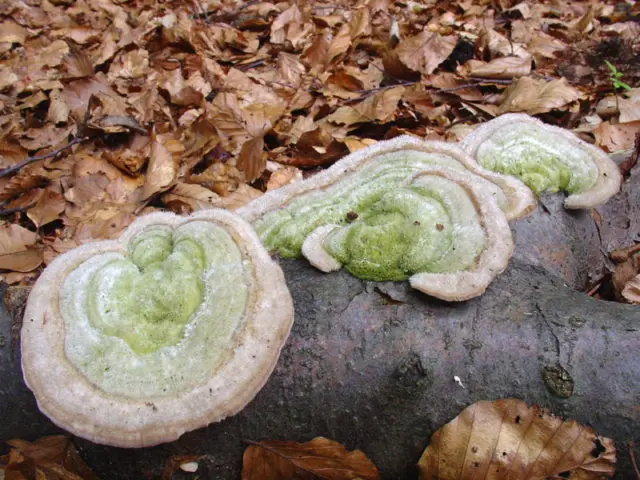
Stiff-haired trametes in autumn deciduous forest
What does rough-haired trametes look like?
Stiff-haired trametes usually adheres to the substrate with the lateral part. In rare cases, on horizontal surfaces, the cap has a prostrate shape. Only the fruiting bodies that have appeared are shell-shaped, with jagged edges. As the cap grows, it straightens out, completely touching the substrate with the flat side surface, the edges become even, slightly wavy. Its diameter is from 3 to 15 cm, the thickness ranges from 0,3 to 2 cm.
The surface is flat, with distinct concentric stripes of various widths. Dense, covered with hard long villi. The color is uneven, stripes, various shades of light gray. The pubescence can be snow-white, grayish, yellowish-cream, greenish. The edge of the cap is light brown, pubescent. The leg is missing.
The lower part is spongy, the pores are quite large, with elastic dense partitions, which become thinner and more fragile with age. The color is beige-reddish, white-gray, shades of baked milk or milk chocolate. The surface is uneven, covered with hard white-silver villi.
The flesh is thin, consisting of two distinct layers: a grayish, fibrous-soft top and a light woody bottom.

The young shoots of Tinder Stiff-haired look like a scattering of intricately indented petals
Where and how to grow
Widely distributed in deciduous and mixed forests, parks and gardens of temperate climatic zones of Our Country, Europe, North America. Prefers dead wood of deciduous breeds, occasionally settles also on coniferous. Inhabits deadwood, old stumps, fallen trunks. It also grows on still living, weakened, dying trees, preferring the following species:
- bird cherry and rowan;
- pear, apple tree;
- poplar, aspen;
- oak and beech.
The period of active growth of the mycelium begins in May and lasts until September-October. Stiff-haired trametes is not picky about weather conditions, loves wet, shady places. It settles singly and in dense groups, forming roof-like outgrowths.
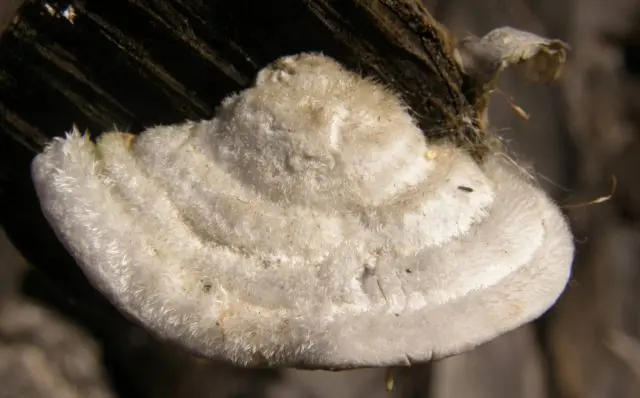
Sometimes coarse-haired trametes can be found on rotten fences and various wooden buildings.
Is the mushroom edible or not?
Rough-haired trametes is classified as an inedible species due to its low nutritional value and hard, tasteless pulp. No toxic substances were found in its composition. It is actively used in the textile, food and cosmetic industries due to the substance it contains – laccase.

As a snack, these beautiful specimens are not suitable.
Twins and their differences
Rough-haired trametes, at a cursory glance, can be confused with some pubescent types of tinder fungus. However, a closer look reveals significant differences. No poisonous twins were found in this fruiting body.
Fluffy trametes. Inedible, contains no toxic substances. It is distinguished by a yellowish or white color, a fleshy lower spongy part running down the surface of the tree and angular pores.
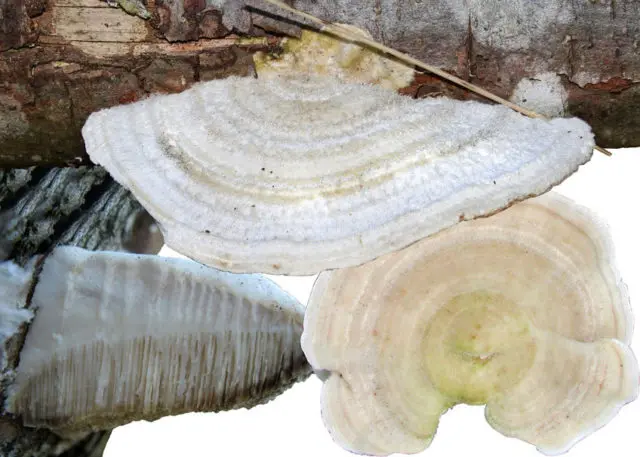
This fruiting body is very popular with larvae and insects that quickly eat it.
Cerena is one-colored. Inedible. It has a pronounced black stripe on the pulp and different-sized, less elongated pores.
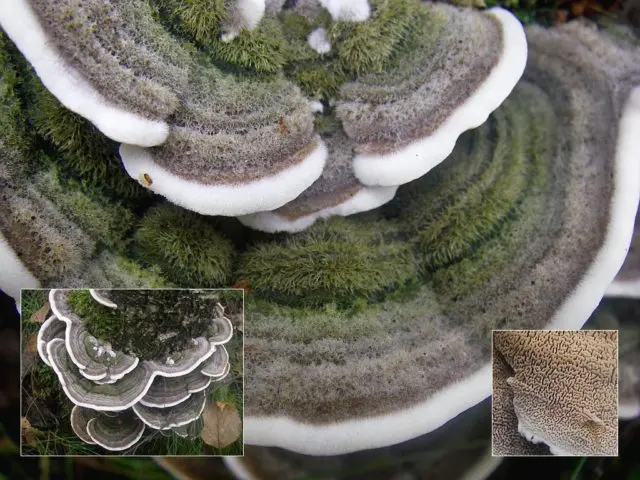
The snow-white edge of the edge and the color of the pile make the single-color cerrena special
Lenzites birch. Inedible. Its main difference is the lamellar structure of the geminophore.
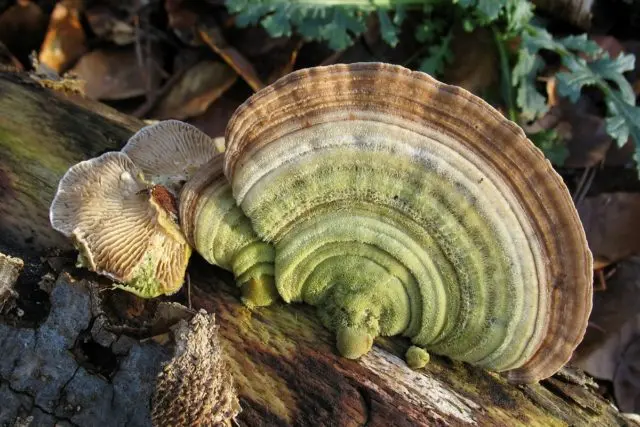
In young specimens, the inner side resembles a labyrinth in structure.
Conclusion
Stiff-haired trametes is widely distributed throughout the Northern Hemisphere in areas with a temperate northern climate. Benefits forests by converting rotting tree remains into fertile soil. Its appearance is quite original, so it is difficult to confuse it with other species. Inedible, does not contain toxic substances. You can meet him at any time of the year, the peak of growth is in the summer. Stiff-haired trametes can feel comfortable on the layers of brown coal, extracting nutrients from it.









